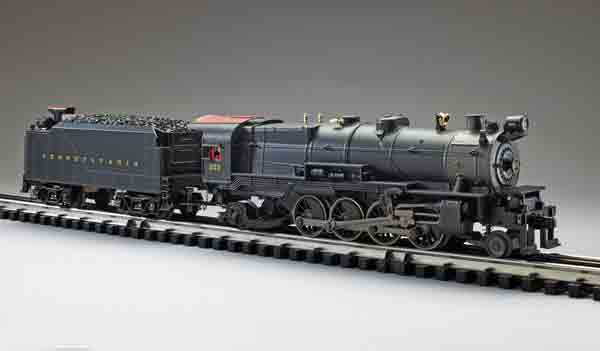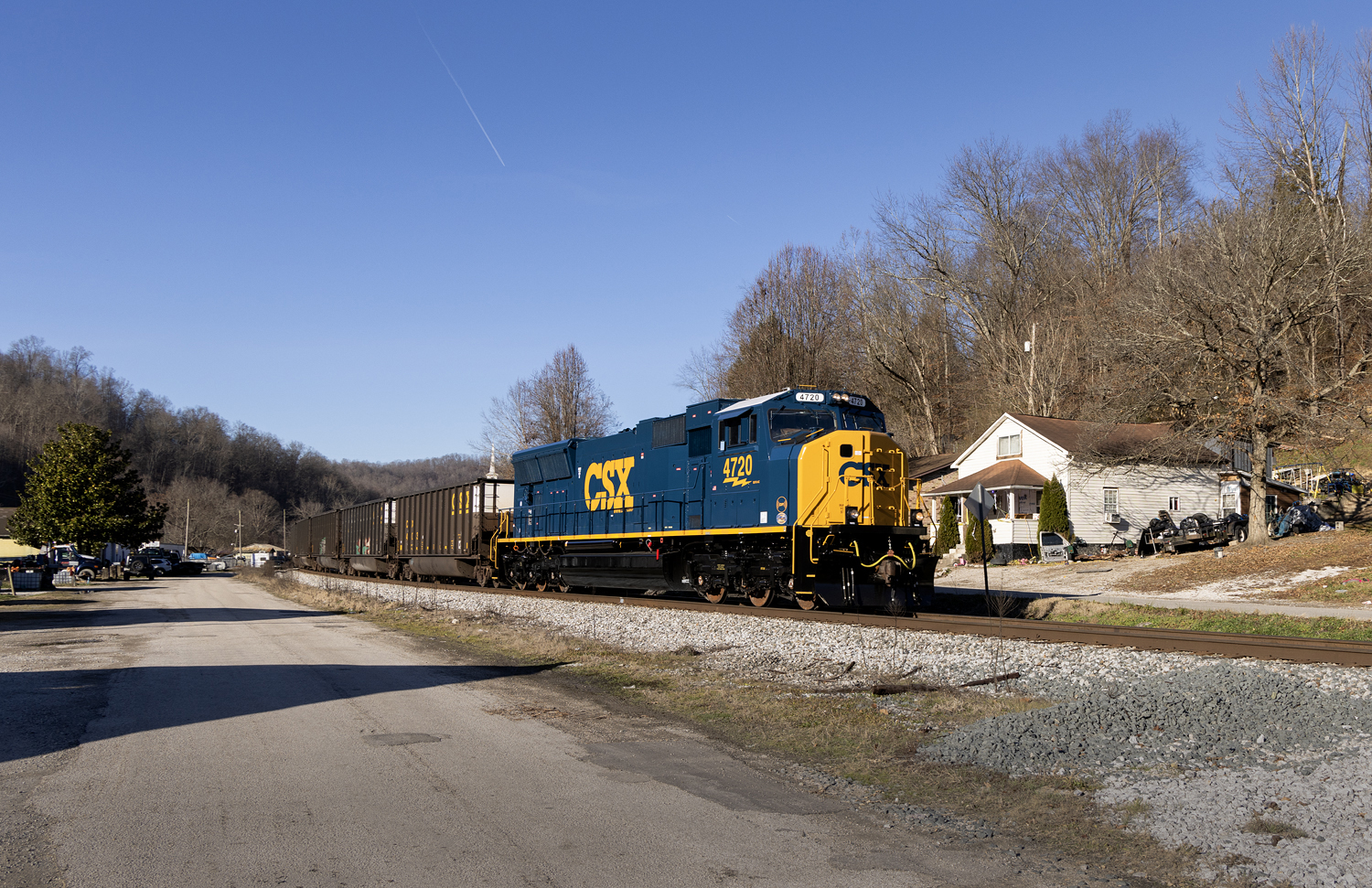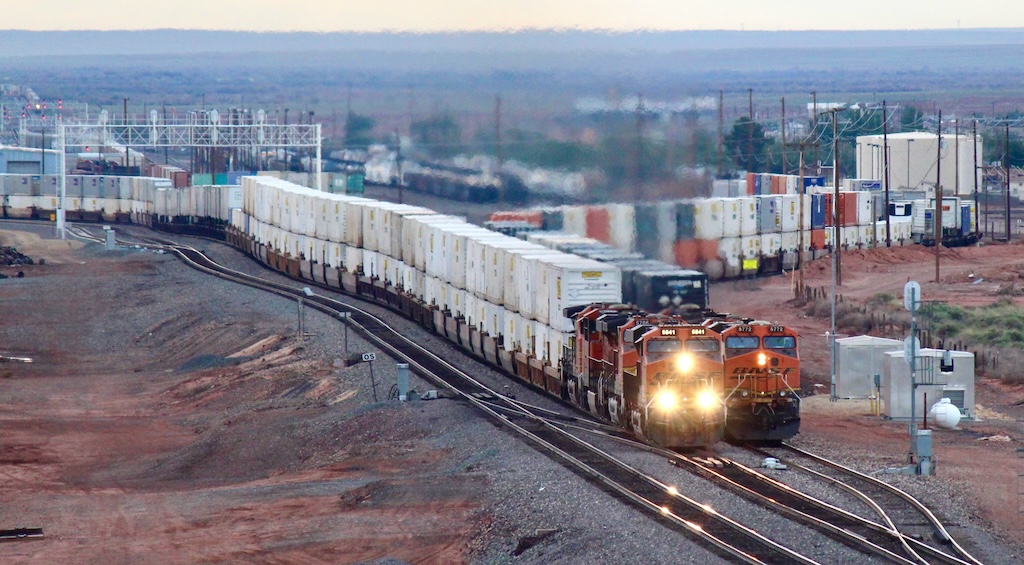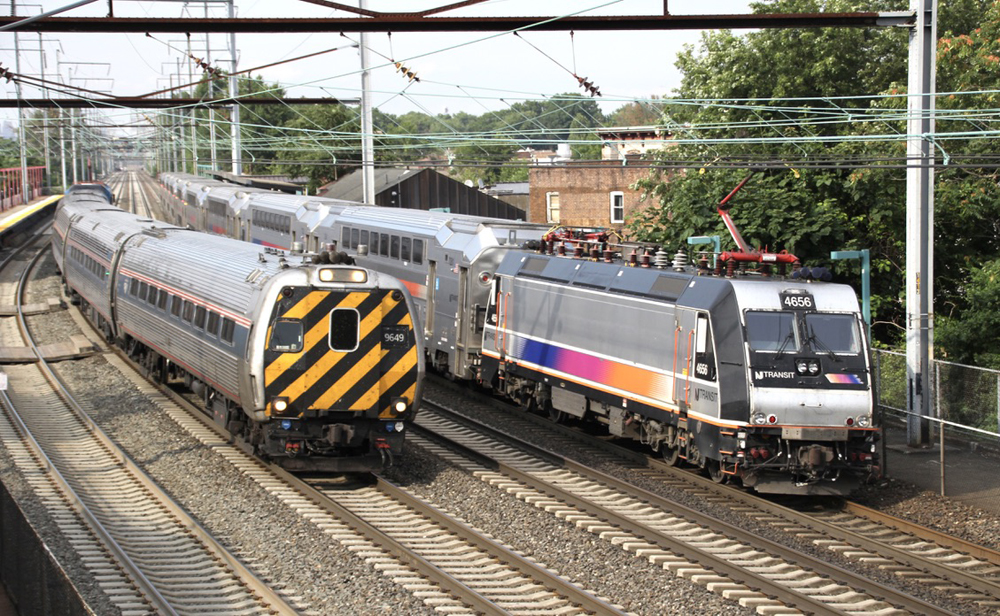Price: $449.95 (no. 30-1641-1) Min Curve: O-31 Cmd Low: 2.1 smph Conv Low: 3.2 smph, High: 68 smph, Drawbar Pull: 1 lb 8 oz.
Features: O-31 die-cast metal construction, MTH’s ProtoSound 3.0 command and sound system, smoke unit, coil coupler
Current production road names: Pennsylvania RR cab nos. 11, 203, and 742; Long Island RR cab no. 1478.
Once the coal was consumed in blast furnaces and power plants, you often had steel or products made of steel that needed to be hauled. Either direction, east or west, big and heavy cargo was the order of the day. The Pennsy needed double-tough locomotion to get the job done, and the railroad’s L1-class 2-8-2 Mikados helped complete the task at hand.
Starting in 1914, more than 574 L1s were erected by the Pennsy’s shop at Juniata, Pa. (344 built), the Baldwin Locomotive Works (205 built), and the Lima Locomotive Works (25 built).
Using the boiler of the Pennsy’s famed K4s 4-6-2, the 157-ton Mikado could generate 61,000 pounds of tractive effort. The performance it delivered was bettered by the Pennsy I1s-class 2-10-0 Decapods, which began arriving just a few years later, but the L1s could still get the job done.
The fleet of Mikados delivered superb service during the two world wars, and some examples operated until he end of steam on the railroad. One L1, no. 520, is preserved at the Railroad Museum of Pennsylvania in Strasburg.
Opening the box
I like the industrial appearance of Pennsylvania RR freight haulers. They look simple yet powerful, and their standardized look doesn’t mark them as generic Pacifics, Mikados, or Decapods, but as Pennsy power. And hoisting this RailKing Imperial locomotive out of the box, I’d swear there must be some scrap K4s metal in the casting!
The front of the O gauge locomotive has the functional (though dangerous) brakeman’s steps on point. The design is basic and has a simulated coupler mounted on the frame. Just behind the coupler is a large air compressor tank, with a deck for maintenance crews just above that feature.
The face of the smokebox has rivet and hinge detail, and an add-on grab iron curves downward from the 9 and back up to the to 3 o’clock position. A number plate with “203” is in the center. A headlight is mounted at the 12 o’clock position.
Just behind the light is a simulated turbine, and on the sides are marker/classification lights.
The smokestack is behind the turbine. Add-on details seen along the top of the boiler include a movable (by finger) bell, whistle, and pop-off valves. There is also a cast-in sand dome and a steam dome.
As for the sides of the boiler, add-on grab irons run its length, from smokebox to the cab. Where the smokebox has basically three rings of rivet detail, the boiler is smooth, broken only by cast-in boiler bands, piping, and sand lines.
Below the roofwalks, you’ll find additional detailing, such as tanks, compressors, water piping, and rivets. Of course, the focal points down below are the drive wheels and running gear. The metal is subdued and not bright and shiny.
The cab has two crew figures, a decorated backhead, firebox glow, and red-painted frames for the windows.
The O gauge locomotive and tender are connected with a wireless tether and a drawbar that clicks into place. There is a pretty good gap between the cab and the deck of the tender, which is undoubtedly to accommodate O-31 curves.
The tender is a die-cast metal product that, per the plate on the rear, is a Pennsylvania RR 90-F-75 tender (a freight tender with a capacity of 9,000 gallons of water and 75 tons of coal). Speaking of coal, the load is “chunk style” versus cast-in, and it looks very good.
The body has ample rivet detailing, and you’ll find grab irons on all four corners of the car. All the trucks have brake chains (for manual setting of the brakes). The rear of the car features a ladder, a backup light, and two marker lights. Set in a little recess is a “doghouse” shelter to protect a brakeman from the weather.
The locomotive and tender are painted Brunswick green, with surfaces like the rear tender deck painted Tuscan red. Lettering, numbers, and text on builder’s plates are gold. Color separation lines were flawless, and we noted no paint defects.
On the test track
The locomotive sounds terrific as it starts up. I really liked seeing the drivers begin to move and hearing the deep “chuff-chuff-chuff” sound kick in. Then the rods began to slowly rotate. This is the stuff we model railroaders live for!
Movement in all speed ranges was smooth as silk, and response to commands was prompt.
Our command-mode low-speed average was 2.1 scale miles per hour, while the conventional-mode low-speed average was 3.2 scale miles per hour. Our high-speed average was 68 scale miles per hour.
Drawbar pull was 1 pound, 8 ounces.
The assorted other train and crew sounds were fine, and response for the remote coupler was instantaneous.
The smoke unit’s performance was up to expectations for re-creating a London fog right in our workshop. Manual controls for both smoke and volume levels are on the underside of the tender.
The RailKing Imperial Pennsylvania RR L1 Mikado delivered solid performance in a package designed for operators running traditionally sized O gauge layouts. It is a solid freight hauler, and it sounds fine! The Pennsylvania had a winner in the L1 class, and it should do well on your layout.















Hi Robert, I am embarrassed to say there was an, uh, unfortunate incident with the locomotive and it was not in a condition in which we could video it.
WHY CAN'T I SEE A VIDEO OF THIS REVIEW. I CAN SEE A VIDEO FOR THE LIONEL NYC ALCO'S. THE SAME THING HAPPENED LAST MONTH WITH ONE OF THE PRODUCT REVIEWS.